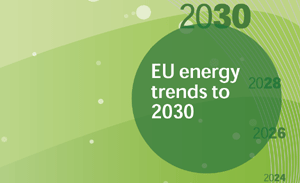'A remarkable turnaround of past trends'
on
‘A remarkable turnaround of past trends’
The Commission’s report, “EU energy trends to 2030”, presents two scenarios. The Baseline scenario is based on current trends and policies, including the European Emission Trading (ETS) scheme and several energy-efficiency measures. The Reference scenario also assumes that the national targets under the Renewable Energies Directive are met.
 |
In the new context of the EU ETS system, the model ‘projects a significant decrease in coal/lignite generation, which accounts for 22.2% of total electricity generation in 2030 in the Baseline 2009, 9 percentage points down from the 2007 Baseline, despite significant penetration of CCS in the new scenario. Gas-based generation increases slightly from current levels in volume terms, but loses market share. The prospects for further penetration of gas based electricity generation are modest in Baseline 2009 contrasting past expectations. Nevertheless, the simulation of the power system reveals that gas will have to play a crucial role for balancing purposes, as according to these new projections more intermittent RES power operate (18.5% in 2030, significantly up from 5.6% in 2010).’
The Reference Scenario ‘confirms the more favourable trends of the Baseline 2009 scenario compared to the Baseline 2007 scenario. The major difference between the two scenarios is the lower ETS carbon price induced by the RES target and the increased energy efficiency policies in the presence of oversupply of allowances following the crisis and the possibility to bank allowances. The lower carbon price has implications on the power generation development and for the structure of primary energy demand.’
You can read a pdf of the report here. Vist the website of the European Commission for all related documents.


Discussion (0 comments)